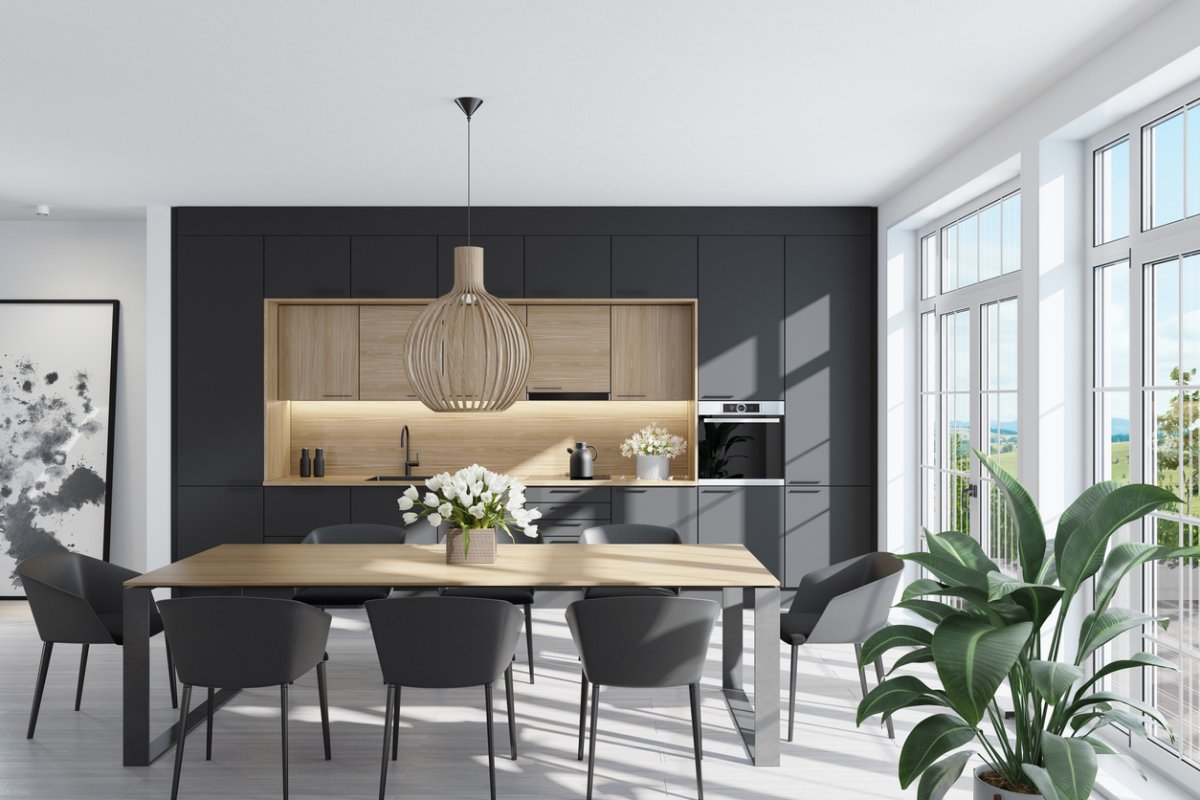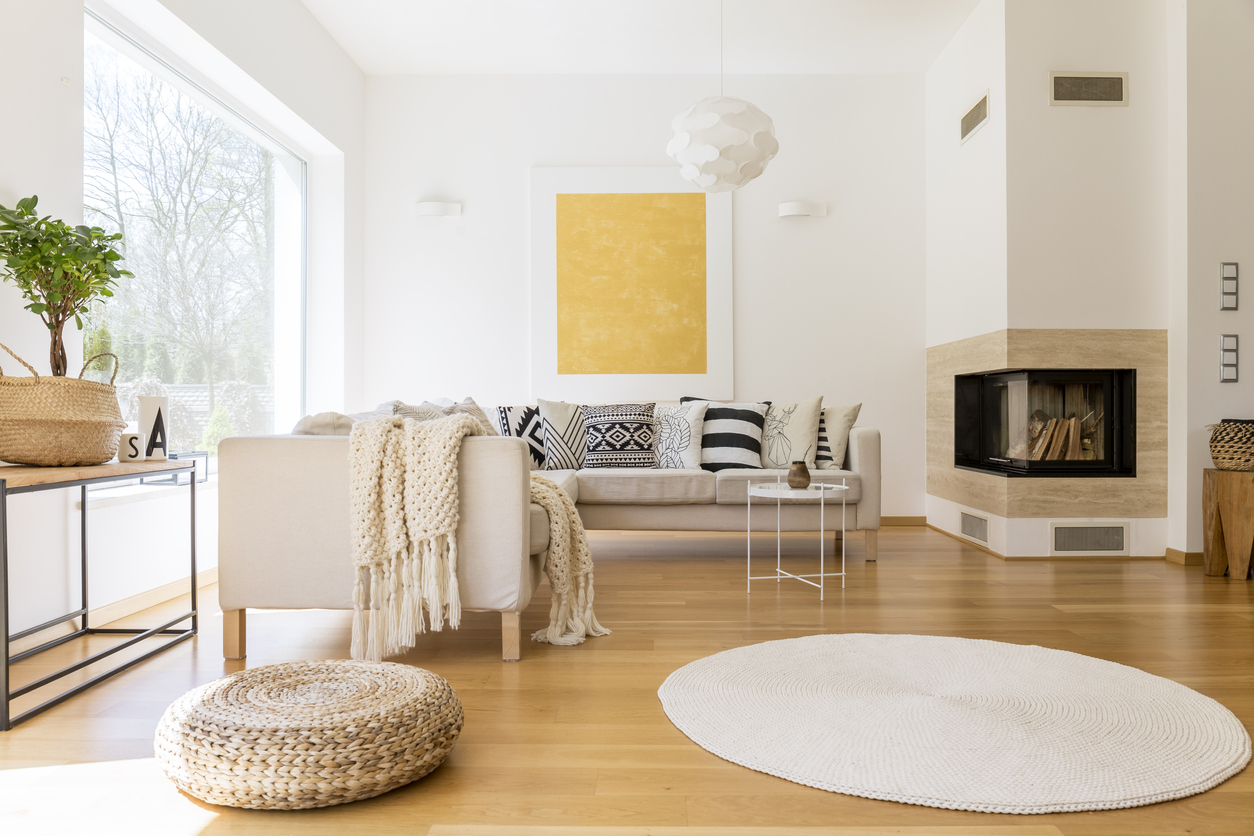

We may earn revenue from the products available on this page and participate in affiliate programs. Learn More ›
Scandinavia is made up—more or less—of five countries where the Scandi design aesthetic originated, namely Iceland, Finland, Norway, Denmark, and Sweden. But what is Scandinavian design? It’s an approach to design that’s been around for decades. However, it exploded in popularity once IKEA, a Swedish brand with expansive home stores, made the design style available at affordable prices throughout the world.
Scandinavian design is noted for clean, minimal but highly functional furniture pieces used to complement clutter-free spaces filled with natural light. Its simple lines and neutral palettes accentuated with a bright color or two create deceptively uncomplicated spaces you won’t want to leave.
However, Scandinavian design extends beyond furniture and colors to architecture, electronics, and a lifestyle that seeks to rid itself of the unnecessary to highlight only the essentials. It’s a way of thinking that embraces natural, organic materials and strives for peaceful coziness.
1. Scandinavian design is minimal and open.
Clutter has no place in Scandinavian design. These spaces strip decor to the very minimum, leaving light, open rooms. However, being minimal and open does not mean stark and cold. Scandinavian style makes a place for everything. Hidden storage that doubles as seating, footrests, or tables maximize the use of each furniture piece.
Minimal, in this sense, means making use of every available space in an effort to leave the room as open as possible. The goal is for everything to have a place. If it doesn’t have a place, then maybe it isn’t necessary. Furniture, artwork, and architecture with simple, clean lines prevent too much visual stimulation that “clutters” the mind.
2. Scandi style favors light and nature.
Open spaces and a minimalist approach are fully complemented by the light-colored woods in Scandinavian furniture and flooring. Light wood also reflects a maximum amount of light while warming the space with wood’s tone, texture, and grain. Nature prevents the lightness from ever feeling stark. By using houseplants, stone, and warm-toned woods, a Scandinavian touch will never feel institutional. When temperatures drop, warm textures and textiles get added in but fit in with the color palette of the Scandi theme.
Light also plays a role in color choices. Color palettes in the Scandi style stay fairly monochromatic with a mix of white and neutral in furniture, wall color, and textiles. Light and neutral colors help expand spaces making them feel even bigger with their minimal decor. Bright pops of color sparingly make appearances in accent pieces to add visual interest. The passion for light usually means a lack of window treatments to let in as much light as possible.
3. Contrast is key.
Contrast plays a very specific visual role in this design style. Black and white create a striking contrast, but they’re often paired with other contrasting colors like red and blue or yellow and brown for added interest. Color, however, isn’t the only way to add contrast.
Contrast comes in textures, like smooth woods next to plush fabrics. Different-sized prints, wall decor, and other accent pieces keep the space interesting without adding clutter.
When building this style in your own home, consider the mood created by colors and textures. Moods can contrast each other, too. A sunny yellow pillow next to a moody navy one serves as an example. Scandinavian style makes room for mix and match tastes but with a specific clean, simple goal in mind.

4. Scandinavian furniture is functional and flexible.
Nowhere are the clean lines of this design aesthetic more obvious than in Scandinavian furniture. Each piece is designed with an eye for function and minimalism without sacrificing beauty.
The mid-century modern style is heavily influenced by Scandi design. Consequently, the two styles’ furniture pieces have similar geometric shapes and simple lines. However, the Scandinavian style relies on natural elements and flexibility in each piece. Sometimes that flexibility comes in multipurpose pieces that nest or act as a table or seating based on need. Others provide hidden storage for books or toys.
One of the main benefits of this flexible functionality is that Scandinavian furniture blends well with other styles. They breathe fresh air into contemporary designs and add natural elements to a mid-century modern home. The key is to find the similarities in styles and use them to create a cohesive look.
Related: The 30 Smartest Things You Can Do to Prepare for a Frigid Winter
5. Hygge is essential.
The concept of ”hygge” comes from Denmark and describes a sense of calm coziness. This somewhat nebulous term has certain design elements associated with it. However, the word itself more accurately represents a feeling rather than specific items or elements.
A room with hygge may have candles to add visual (and actual) warmth, a chair with soft upholstery, and a blanket nearby to invite the room’s occupants to sit and relax for a while. That’s because hygge encourages people to not just be in the present but experience it by slowing down to enjoy the here and now. For design, that translates into pieces that look comfortable and feel welcoming. The room’s design should make you want to stay in the moment.
6. Scandinavian design is timeless.
Thanks to the simplicity and multi-functional aspect of Scandi style, it’s a timeless design aesthetic that won’t date your home. The neutral palette can easily transition through seasons and trends by swapping out accent colors and pieces.
For example, new pillowcases in various accent colors can modernize a space without the need for an entire palette change. Because less is more with this style, that also means you don’t get bogged down in furniture, lighting, and textiles that quickly go out of favor.
A look that stays away from flourish and glam ages well because it doesn’t incorporate every trend that comes along. The neutral colors and accents act as a palette that you can change and adjust without completely renovating the interior design.

Related: 12 Ways Buying a Home Has Changed Over the Past 50 Years
7. Sustainability is an integral part of Scandi style.
Sustainable thinking permeates the Scandinavian style. Timeless pieces that last for years, natural, renewable materials, and a minimal approach to living all have roots in a sustainable lifestyle.
Scandinavian designs also feature handmade, hand-sewn elements that stem from a culture steeped in a tradition of fine craftsmanship. From woodworking to textiles, the Scandinavians take pride in their work.
This area of the world also enjoys a close relationship with nature. The cold climate and long winter nights establish a healthy respect for nature. Scandanavians also strive to make the most of the materials at hand and use those materials to bring light and joy to long winter nights.
